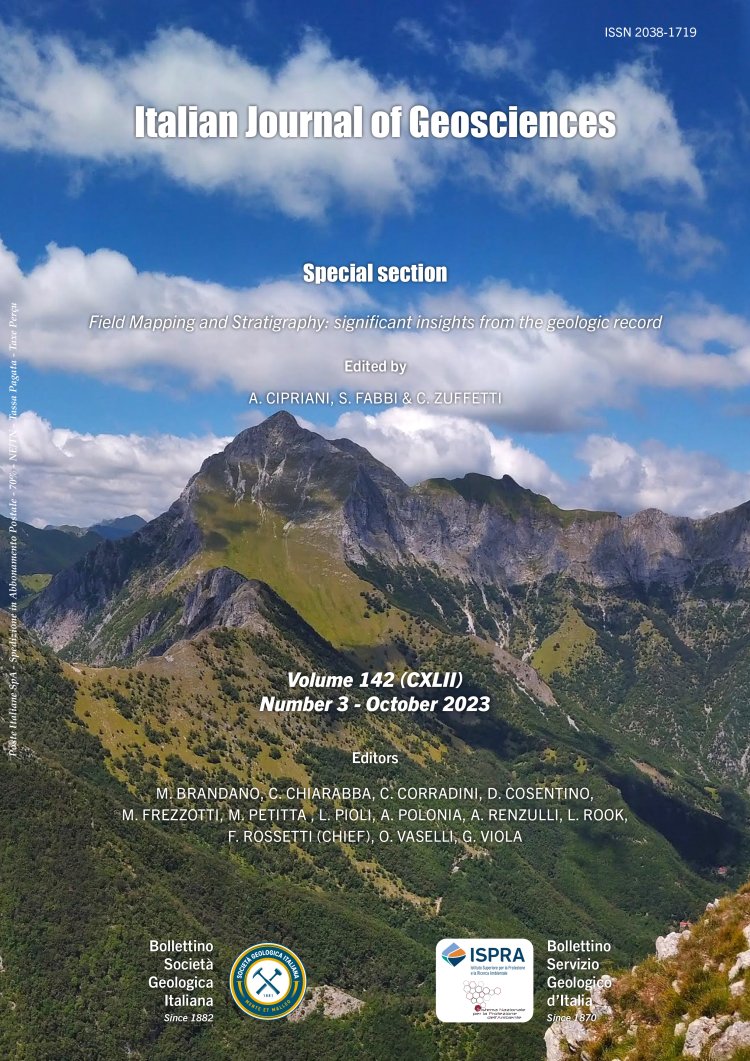
A new section of Upper Pleistocene alluvial-colluvial deposits in the foothills of the Marche Ridge (Northern Apennines, central Italy)
Alessandro Montanari1 & Gaia Pignocchi2
1Osservatorio Geologico di Coldigioco, Cda. Coldigioco 4, 62021 Apiro (MC), Italy. Tel. (39) 3200125225.
1Geoarchaeologist GIS, Scuola di Scienze e Tecnologie, Università di Camerino, Via Gentile III da Varano, 62032 Camerino (MC), Italy.
Corresponding author e-mail: sandro.coldigioco@gmail.com
Volume: 142 (2023) f.3
Pages: 426-442
Abstract
An ~10-m-thick Pian di Rote section (City of Apiro, province of Macerata) of Upper Pleistocene alluvial-colluvial deposits recently uncovered on a road cut after a landslide on the eastern foothills of the Marche Ridge (central Italy), contains three archaeological levels characterized by chert artefacts in primary position (flakes, blades, and cores). Moreover, in the lower part of the section, a palaeo-mudflow deposit within an alluvial conglomerate, contained a now-lost fossil of a human skull. These archaeological levels were radiocarbon dated suggesting that the Pian di Rote site was frequented by humans since the Late Aurignacian to the Early Epigravettian stages of the Upper Palaeolithic. The abundance of chert artefacts in a palaeosurface horizon in the upper part of the section, which was dated at ~18.8 thousand years before present, suggests that this site was occupied by a lithic workshop, which, along with several other more or less coeval chert workshops previously excavated in this region, confirms the foothills of the central Marche Ridge as a lithic industrial district of Upper Palaeolithic age.
Keywords
Get Full Text